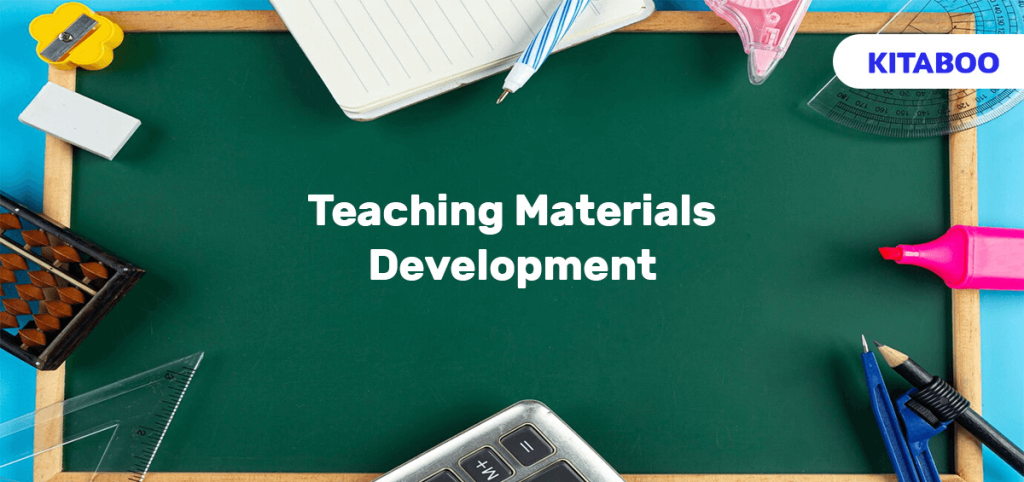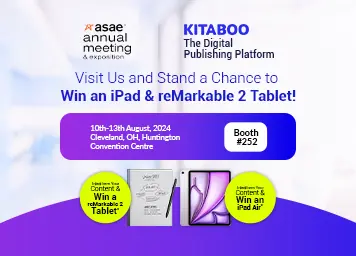
Teaching Materials Development: A Step-by-Step Approach
The key to successful teaching lies in the art of effective communication. Here’s the challenge – words alone often fall short in the quest to ignite curiosity, foster understanding, and inspire lifelong learners. The strategic use of instructional materials is a powerful tool that can elevate your teaching methods and enrich the learning experience for your students.
Every teacher possesses an individual teaching approach, just as every student has a distinctive learning style. Teaching materials should be flexible and dynamic to address this diversity among educators and students. From traditional chalkboards to modern visuals and digital textbook platforms like KITABOO, we’ll demonstrate how these tools can enhance your teaching methods, leading to more engaged and informed students.
Table of Contents:
I. Teaching Materials Development- An Overview
II. Step-by-Step Approach for Teaching Materials Development
- Step 1: Defining Lesson Objectives
- Step 2: Finalizing the Content and Concepts
- Step 3: Highlighting the Materials Required
- Step 4: Emphasizing the Assessment and Performance Evaluation Strategies
III. Final Summary
Teaching Materials Development - An Overview
Educators must follow a structured process to construct their course content, evaluation methods, and grading standards. Once this framework is built, the next step is defining a course delivery strategy, which involves curating your teaching materials.
Developing robust teaching materials is crucial to:
- Enhancing subject comprehension
- Steering learners away from rote memorization
- Promoting practical experience, skill development, and diverse learning approaches
Teaching materials are diverse in scope and sequence and can vary from lesson plans to interactive tools to make the class interesting. The materials can be both physical assets and digital resources.
Teaching materials can be used for various purposes:
- Support learning activities such as reading, writing, and speaking
- Facilitate learning
- Engage learners in active involvement with the subject matter
- Assist learners to practice what they have learned
- Provide instant feedback and resources
Ultimately, the teaching materials should enhance the teaching process and create an open learning environment.
Step-by-Step Approach for Teaching Materials Development
Step 1: Defining Lesson Objectives
The first thing you should do when planning a lesson is determine its purpose. What do you want students to learn? What will they be able to do after they’ve mastered the material?
Writing or revising learning objectives can:
- Enable educators to reevaluate their teaching content with a new outlook, potentially leading to improved teaching materials and methods.
- Eliminate unnecessary teaching material and ensure that activities align with the intended outcomes.
- Serve as a framework for organizing lessons and teaching materials, ensuring a logical and cohesive structure powered by the right resources.
- Clarify the level of thinking and learning expected from students, offering opportunities and resources for more engaging and challenging educational experiences.
- Set clear expectations to aid student learning.
For example, at the end of an English lesson on a novel, your objective is that students should be able to identify the rising action, climax, and falling action on a plot diagram. Determining this objective can help you source the right teaching materials to deliver your lesson effectively and engagingly. Perhaps this entails including a movie in the lesson plan so students can compare narrative forms to enhance their understanding.
Step 2: Finalizing the Content and Concepts
Once your learning objectives are clear, you can compile all the information students require to achieve them. What topics will you cover? What aspects of those topics will be emphasized? What learning objective is this content helping to address?
Here are some tips to help you organize your content:
- Prepare a mind map of all your possible ideas and solutions, no matter how hard or creative they might be to achieve.
- Identify key resources and content, classify them under the different learning objectives, and define your target audience through learner style, subject, etc.
Step 3: Highlighting the Materials Required
After outlining the course content, you must follow a knowledge dissemination strategy. How will you effectively deliver concepts to students in an engaging manner? How can you curate your teaching materials to include all learners (e.g., visual vs. kinesthetic learners)?
Teaching materials are vast and dynamic, ranging from workbooks and sample papers to multimedia content and interactive eBooks.
- Ensure you have a comprehensive collection of resources from diverse perspectives and formats.
- If you have students with disabilities in the classroom, ensure your content is accessible (read-aloud features, closed captions, etc.)
- Include interactive elements to enhance engagement and retention (e.g., games and interactive videos and assessments)
Step 4: Emphasizing the Assessment and Performance Evaluation Strategies
It’s crucial to develop the appropriate assessment methods and performance evaluation guidelines. How will students demonstrate what they’ve learned? How can assessments provide a holistic evaluation of an individual?
Today, we need to gauge the learner’s level of understanding not only after the course is completed but at different levels during the course. Doing so will help students and teachers understand the gaps in learning and what can be done to facilitate the learning process. For instance, you can increase student engagement by incorporating quizzes, polls, and skill-based evaluations through multimedia experiences provided by KITABOO, the digital textbook platform.
While teaching materials supplement a teacher’s role in the classroom, they are nevertheless incredibly important to achieve positive learning outcomes.
Here is a tabular overview to help you understand better:
| Goal | Key Question |
| Deciding on a topic | What will be covered in the lesson? |
| Objective of the process | What do you want students to learn? |
| Selected approach | How will they learn? |
| Resource allocation | What do you need to teach this topic? |
| Methods of assessment | How will students demonstrate what they’ve learned? |
In Conclusion
Once you get past the rudimentary details, teaching materials development becomes a matter of creative problem-solving. Although there’s no magic formula to make this process easy, the more you understand the underlying principles of education and the learning process, the better you’ll do when creating an outstanding set of teaching materials.
This is where KITABOO steps in. We help you establish the framework necessary for setting the lesson plan. Once the basic components are finalized, we incorporate insights and publishing assistance to automate the steps involved. Are you ready to make learning engaging and accessible to all? Try it out today!
Suggested Reads:
Discover how a mobile-first training platform can help your organization.
Kitaboo is a cloud-based platform to create, deliver & track mobile-first interactive training content.






